In today's fast-paced business environment, effective communication with stakeholders is more crucial than ever. A well-crafted stakeholder communication plan not only enhances transparency but also fosters stronger relationships and trust. By outlining key messages, communication channels, and engagement strategies, stakeholders can stay informed and involved in the decision-making process. So, let's dive deeper into the components of an effective stakeholder communication plan and explore how it can benefit your organization.
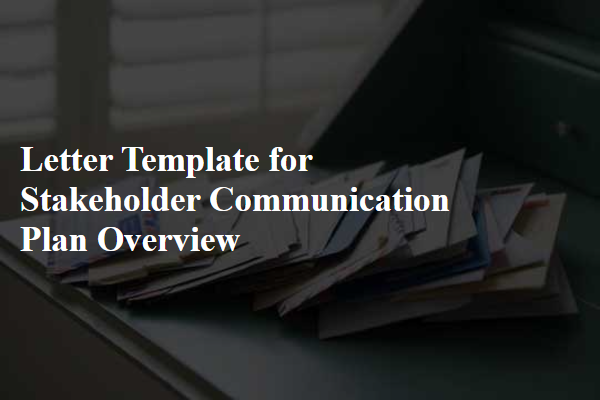
Audience Identification
Effective stakeholder communication plans identify and prioritize audiences such as shareholders, employees, customers, suppliers, and the local community, ensuring engagement across various levels. Shareholders, consisting of both institutional investors and individual stockholders, seek timely financial reports and updates on company performance. Employees, representing various departments and hierarchies, require transparent internal communications regarding policies, changes, and company culture. Customers, segmented by demographics and purchasing behavior, benefit from targeted messaging that enhances product understanding and customer satisfaction. Suppliers, involved in the supply chain, need clear guidelines on procurement processes and expectations. The local community, encompassing residents and local organizations, is engaged through community outreach initiatives and corporate social responsibility programs, enhancing the company's reputation and fostering goodwill. Each audience group plays a vital role in the company's ecosystem, necessitating tailored approaches for effective engagement and collaboration.
Communication Objectives
Effective stakeholder communication is crucial for successful project management and long-term business relationships. Clear communication objectives ensure that all stakeholders--including employees, clients, suppliers, and investors--understand project goals and expectations. Establishing objectives such as raising awareness about project milestones, fostering transparency through regular updates, and facilitating feedback channels enhances stakeholder engagement. Defining measurable outcomes like increasing stakeholder satisfaction by 20% within six months or achieving a 90% response rate on surveys can help gauge the effectiveness of communication strategies. Utilizing various platforms, including newsletters, social media, and meetings, further diversifies outreach efforts, accommodating diverse preferences among stakeholders. Prioritizing timely communication to address stakeholder concerns and expectations can streamline project execution and cultivate trust, ultimately contributing to project success.
Key Messages
Key messages play a crucial role in stakeholder communication plans, as they encapsulate the core information and sentiments organizations wish to convey. Clear and concise key messages need to highlight critical initiatives, like sustainability efforts or community engagement projects. For instance, an organization might emphasize its commitment to environmental responsibility by reducing carbon emissions by 40% within five years instilling confidence among stakeholders. Additionally, a message regarding a significant upcoming event, such as a public consultation meeting scheduled for March 15, 2024, can foster engagement and transparency. Tailored key messages for different stakeholder groups, such as investors, local communities, or regulatory bodies, ensure that all communication is relevant and impactful, facilitating a stronger connection and alignment with organizational goals.
Channels and Tools
An effective stakeholder communication plan utilizes various channels and tools to ensure consistent messaging and engagement. Primary communication channels include email, which provides a direct and formal method for updates and information sharing, and social media platforms like LinkedIn or Twitter, which allow for broader outreach and real-time interactions. Video conferencing tools such as Zoom or Microsoft Teams enable face-to-face discussions, fostering collaboration despite geographical barriers. Additionally, project management software like Asana or Trello facilitates regular progress updates and task tracking, allowing stakeholders to stay informed of developments. Surveys and feedback forms can collect stakeholder input, ensuring their voices are heard in decision-making processes. Regular newsletters, either digital or print, can summarize key activities and milestones, reinforcing the importance of stakeholder involvement in the project's success.
Feedback Mechanisms
Effective feedback mechanisms are essential for enhancing stakeholder engagement in projects. Surveys, such as Likert scale questionnaires, allow stakeholders to express their opinions quantitatively, while open-ended questions provide qualitative insights. Regular focus groups can facilitate in-depth discussions, fostering collaboration among stakeholders at various levels, such as community members or business partners. Online platforms, including dedicated social media pages or feedback portals, enable continuous dialogue, ensuring that stakeholders can voice concerns in real-time. Additionally, scheduled review meetings, held quarterly or bi-annually, facilitate face-to-face interactions for comprehensive feedback collection. This multi-channel approach not only promotes transparency but also strengthens relationships between stakeholders and project teams, ultimately leading to improved project outcomes.

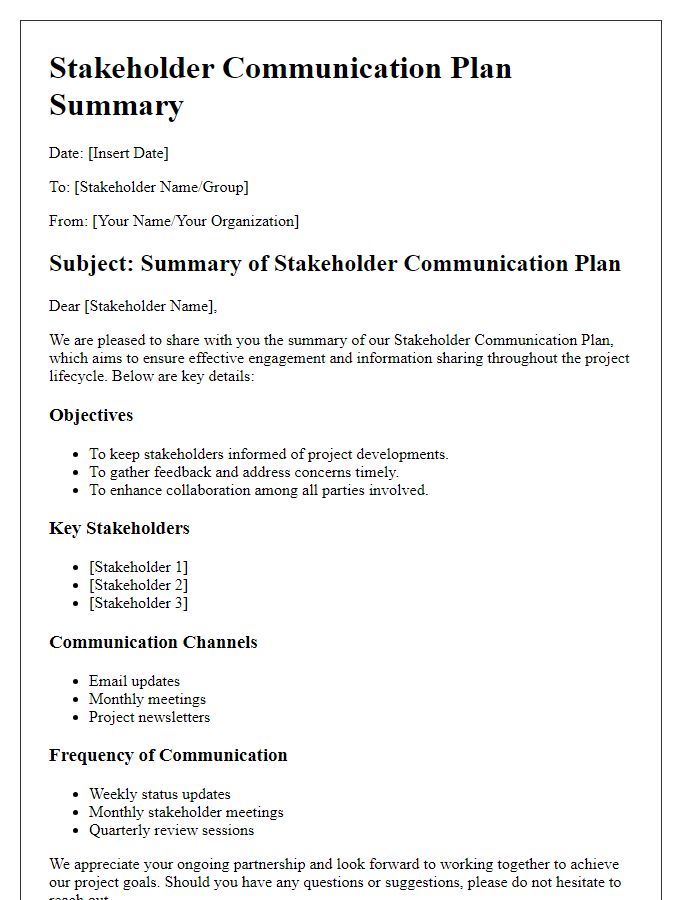
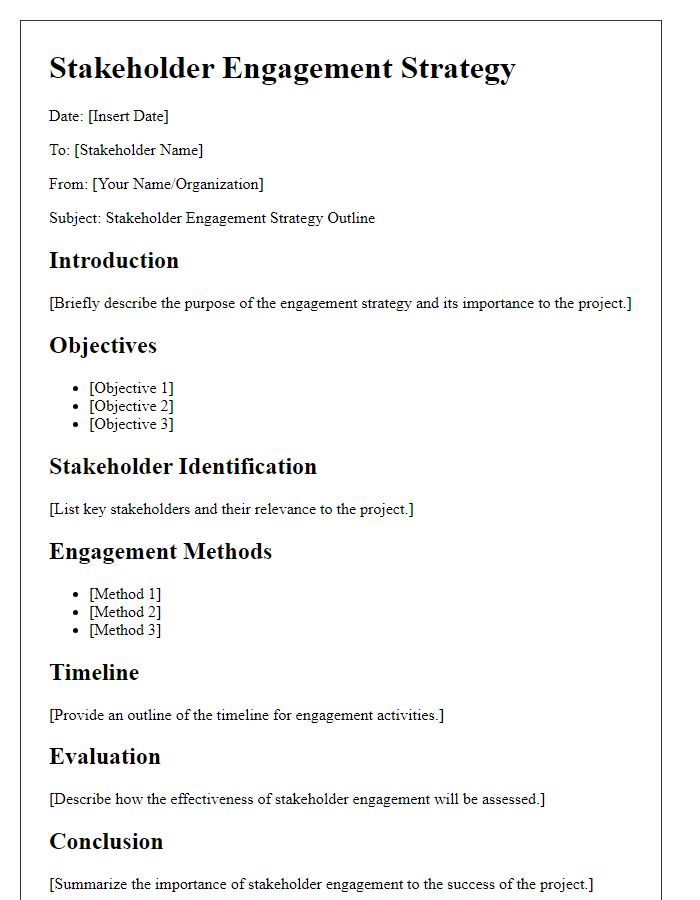
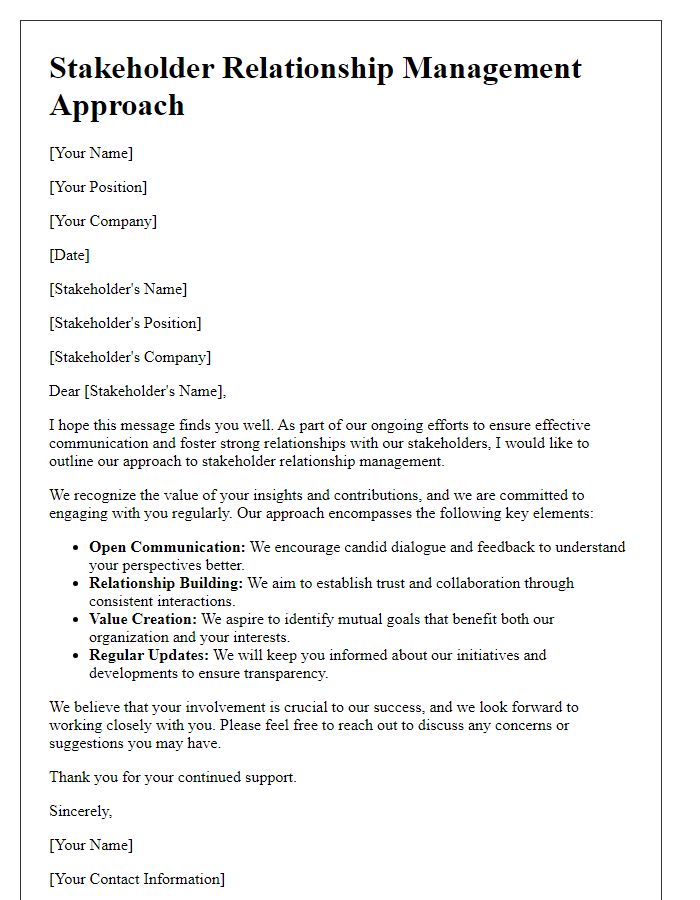
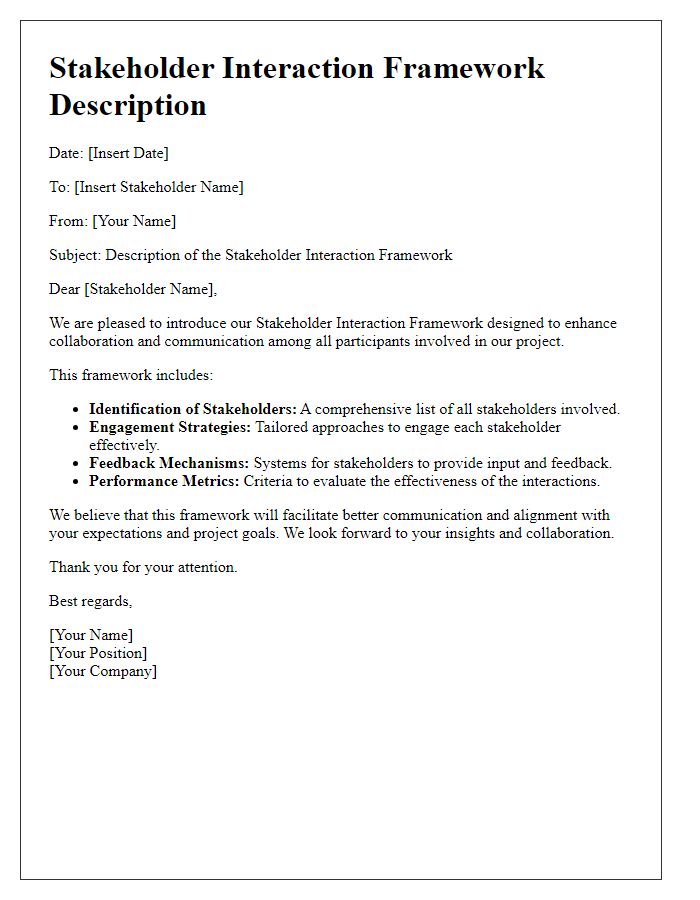
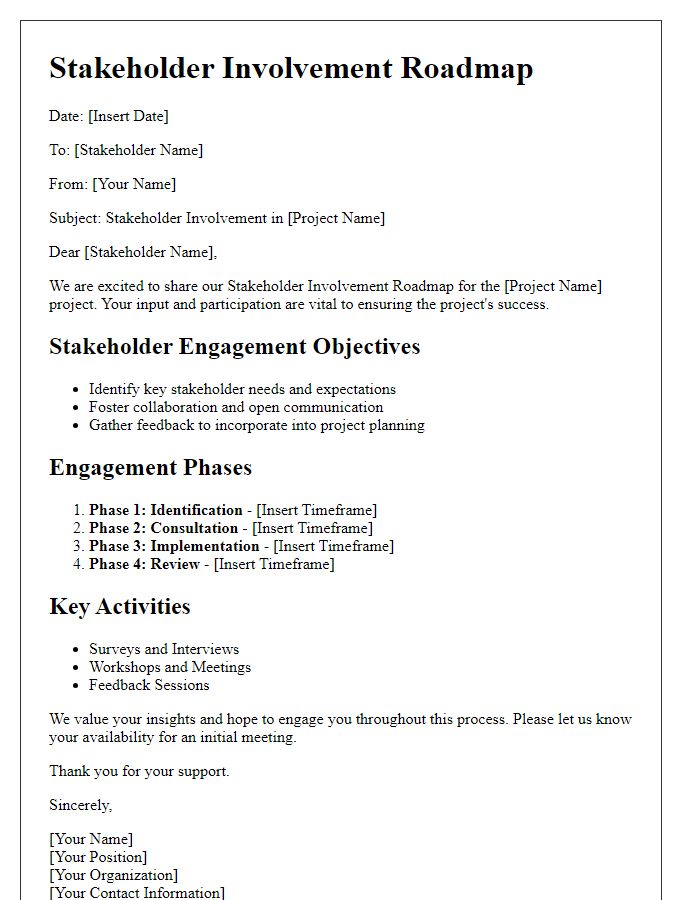
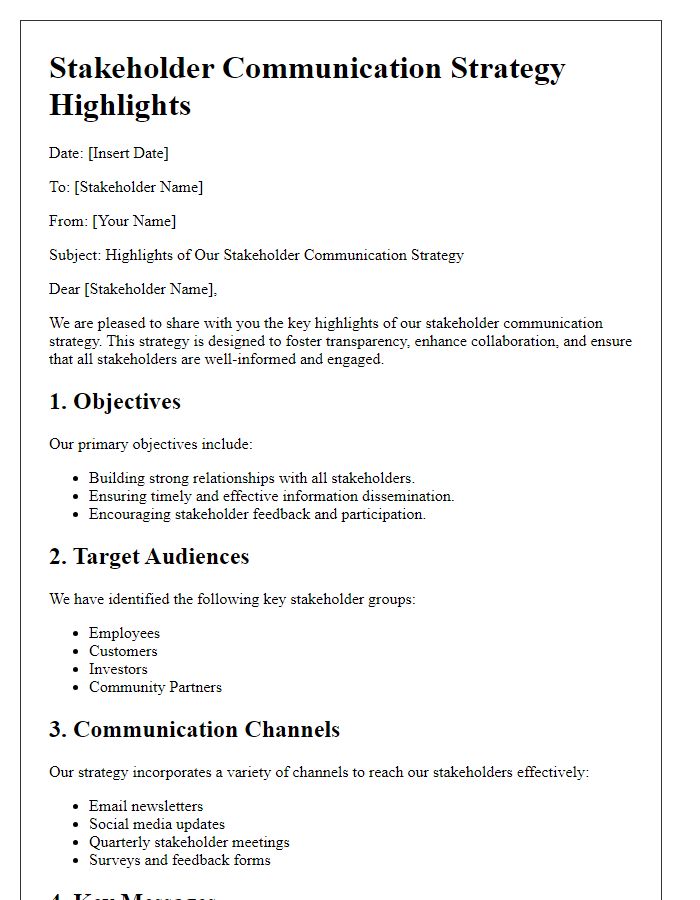
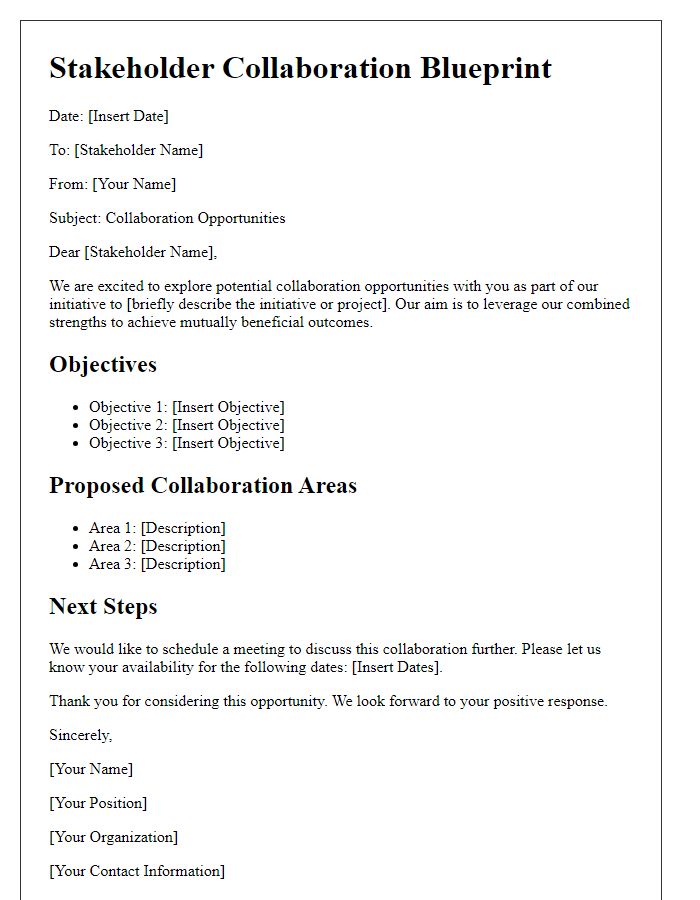
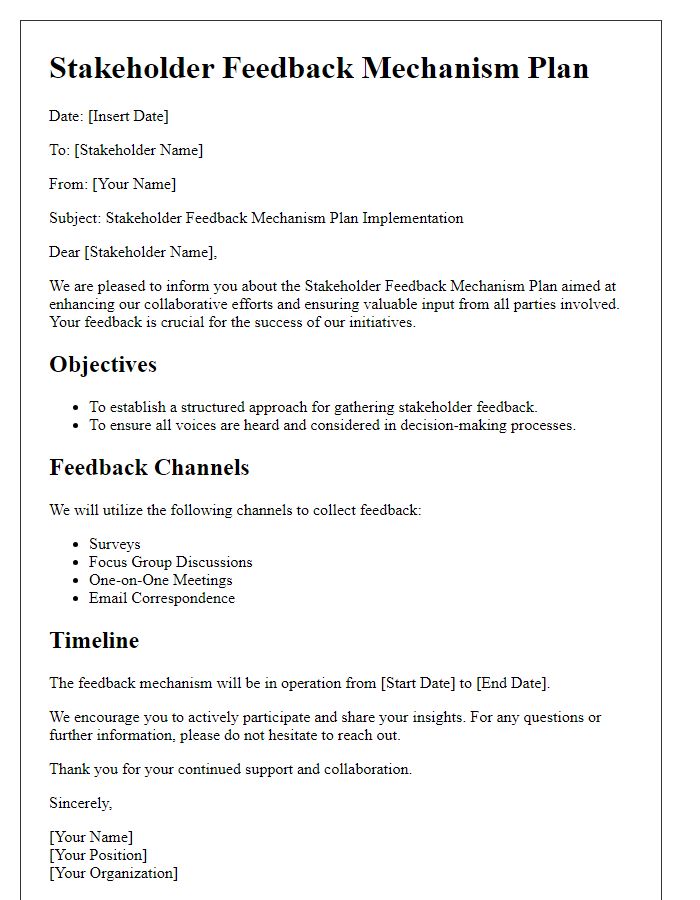
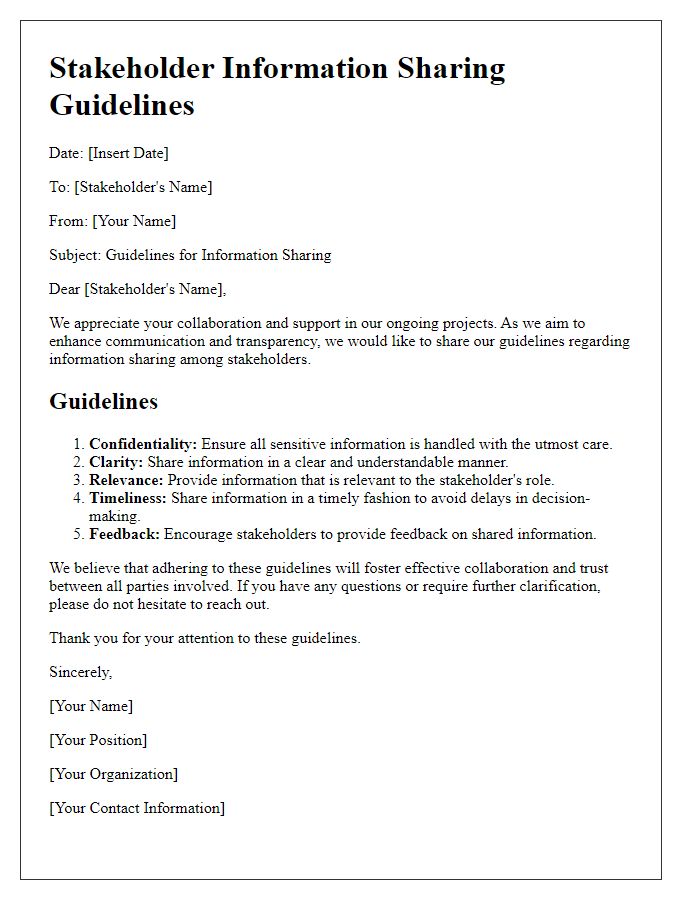
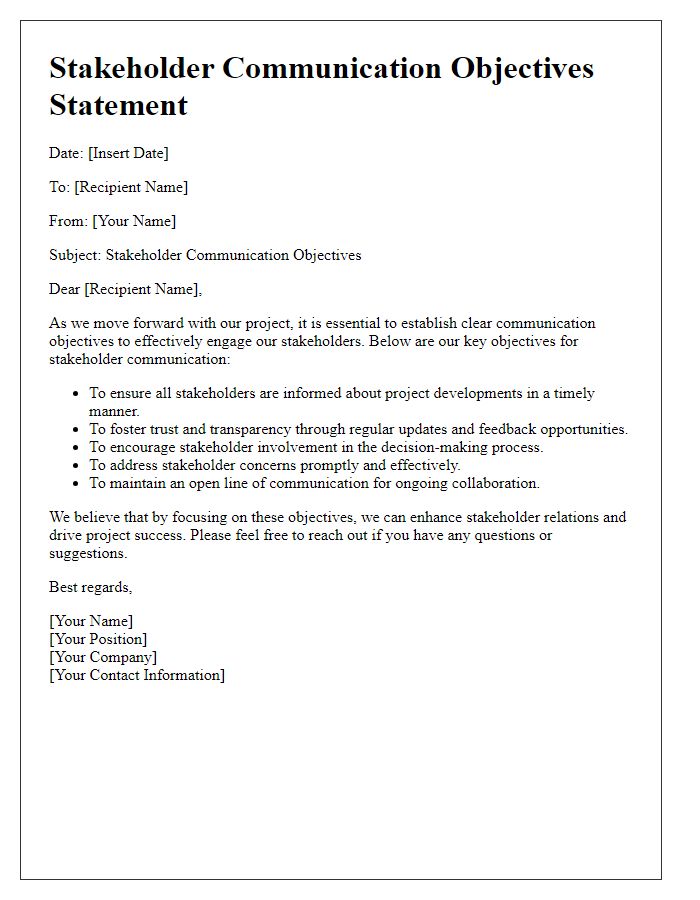

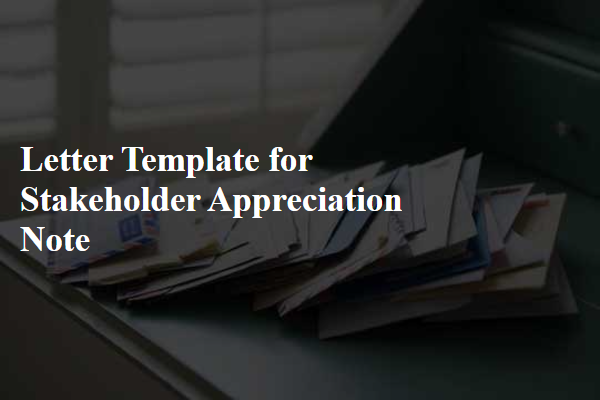
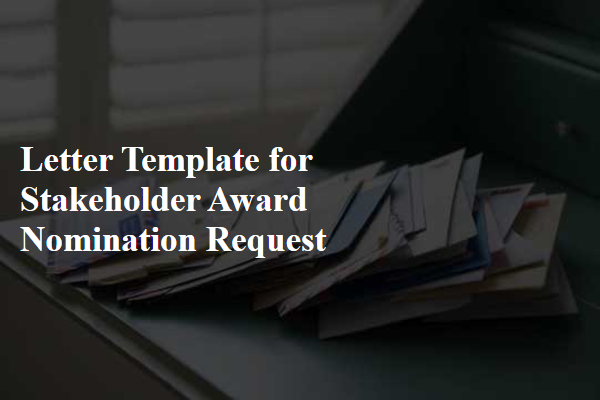

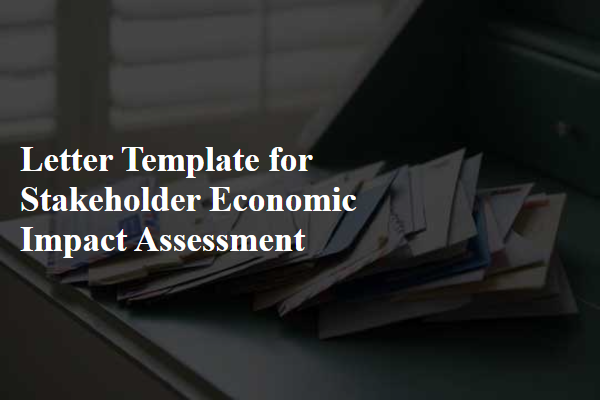
Comments